- Home
- Sandra Cisneros
A House of My Own
A House of My Own Read online
ALSO BY SANDRA CISNEROS
Have You Seen Marie?
Caramelo
Woman Hollering Creek
The House on Mango Street
Loose Woman (poetry)
My Wicked Wicked Ways (poetry)
Hairs/Pelitos (for young readers)
Vintage Cisneros
Credit fm2.1
THIS IS A BORZOI BOOK
PUBLISHED BY ALFRED A. KNOPF
Copyright © 2015 by Sandra Cisneros
All rights reserved. Published in the United States by Alfred A. Knopf, a division of Penguin Random House LLC, New York, and distributed in Canada by Random House of Canada, a division of Penguin Random House Ltd., Toronto.
www.aaknopf.com
Knopf, Borzoi Books, and the colophon are registered trademarks of Penguin Random House LLC.
Grateful acknowledgment is made to the following for permission to reprint previously published material:
Arte Público Press: “I Salute the Dead (Darkness Under the Trees)” from The Sadness of Days by Luis Omar Salinas, copyright © 1987 by Arte Público Press, University of Houston. Reprinted by permission of Arte Público Press, University of Houston.
Princeton University Press: Excerpt from “Ithaka” from Collected Poems by C. P. Cavafy, copyright © 1992. Reprinted by permission of Princeton University Press, administered by Copyright Clearance Center, Inc.
This page constitutes an extension of the copyright page.
Library of Congress Cataloging-in-Publication Data
Cisneros, Sandra. [Essays. Selections]
A house of my own : stories from my life / Sandra Cisneros.
First edition. pages cm
“This is a Borzoi book” — Verso title page.
ISBN 978-0-385-35133-1 (hardcover) — ISBN 978-0-385-35134-8 (eBook)
1. Cisneros, Sandra—Homes and haunts. 2. Cisneros, Sandra—Family. 3. Mexican Americans—Mexico—Biography. 4. Mexican American women authors—Biography. 5. Authors, American—20th century—Biography.
I. Title.
PS3553.178Z46 2015 813′.54—dc23 [B] 2015007520
eBook ISBN 9780385351348
Front-of-Cover photograph by Diana Solís
Back- and spine-of-Cover image:
Mingei International Museum/Art Resource, N.Y.
Cover design by Stephanie Ross
v4.1
a
Para Tey Diana Rebolledo, fe
Carla Trujillo, ánimo
Ruth Béhar, inspiración
Macarena Hernández, corazón
Josie F. Garza, devoción
Y para iluminación, Norma Alarcón
The pearl is the oyster’s autobiography.
—FEDERICO FELLINI
Contents
Cover
Also By Sandra Cisneros
Title Page
Copyright
Dedication
Epigraph
Introduction
Hydra House
No Place Like Home
Luis Omar Salinas
Falling in Love with Enamoramiento
Marguerite Duras
Huipiles
Vivan los Muertos
Straw into Gold
A Tango for Astor
Only Daughter
Letter to Gwendolyn Brooks
My Wicked Wicked Ways
Who Wants Stories Now
La Casa Que Canta
Mercè Rodoreda
The House on Mango Street’s Tenth Birthday
I Can Live Sola and I Love to Work
Tapicero’s Daughter
Guadalupe the Sex Goddess
¡Que Vivan los Colores!
Tenemos Layaway, or, How I Became an Art Collector
An Ofrenda for My Father on Day of the Dead
Un Poquito de Tu Amor
Eduardo Galeano
Infinito Botánica
El Pleito/The Quarrel
To Seville, with Love
A White Flower
Señor Cappuccino
Natural Daughter
A Girl Called Daydreamer
A House of My Own
An Ofrenda for My Mother
Resurrections
Ten Thousand
The Author Responds to Your Letter Requesting My Book Be Banned from the School Library
The Girl Who Became a Saint: Teresa Urrea
Chavela Vargas: Una Mujer Muy Mujer
Chocolate and Donuts
Akumal
A Borrowed House
Epilogue: Mi Casa Es Su Casa
Pilón: Infinito
Resting Place/Descanso
Acknowledgments
Illustration Credits
A Note About the Author
Credit fm3.1
My desk in my Chicago Bucktown flat when I was writing
The House on Mango Street
Introduction
A long time ago, which was yesterday, I could tell time by the typeface on my manuscripts. I mean yesterday BC—Before Computers. I owned a variety of manual typewriters and only gradually and reluctantly moved into the electronic world without somehow ever managing to get ahold of the Rolls-Royce of typewriters—an IBM.
I roamed about the earth and borrowed typewriters in Greece, France, the former Yugoslavia, Mexico, and throughout the United States. My manuscripts were sheaves of paper with holes from where the placket struck the page too fiercely. And everywhere I went, the poems or stories or essays I typed, with their mismatched typefaces and consistent typing errors, reminded me, like passport stamps, where I’d been.
Sometimes I was living on a grant. Sometimes I was living in a borrowed house or guest room. Sometimes I convinced myself I was in love, but most of the time I lived alone in a space that wasn’t mine with bills that flared like small fires. That meant I passed through a lot of houses, loves, and typewriters, never quite finding the right one.
I am writing this now on a laptop in central Mexico, in a region where my ancestors lived for centuries. My office is a leather equipal table and chair on a covered terrace. On either side of me, a Chihuahua snoozes. Next door a palm tree rattles like a maraca, and down in the town center a church bell gongs the hour.
In my last house in San Antonio, Texas, I worked in a two-story office in my backyard and lived with a flock of dogs that followed me about like Mary’s little lamb. I still own dogs, and I still have a lot of typefaces on my manuscripts; some files I can’t open because the computer is long gone and so is the software. I count the passing of time by the purchase of writing machines.
So I’m gathering up my stray lambs that have wandered out of sight and am herding them under one roof, not so much for the reader’s sake, but my own. Where are you, my little loves, and where have you gone? Who wrote these and why? I have a need to know, so that I can understand my life.
These stories from my life span from 1984 to 2014. Most were written for specific audiences, a university or high school lecture, a journal, an anthology, often at someone’s request. In the beginning, I didn’t have a lot of confidence to speak as myself. I used the scrim of poetry and fiction. The truth told slant, as Emily Dickinson instructed. To speak as me required learning to come out from behind the screen.
In an early autobiographical response compiled in a book of Chicano interviews, not only were the facts wrong (I was young enough to take the family at their word regarding story), but my own voice sounds stilted, as if I were wearing a big suit with suede patches and smoking a pipe. I disown that first essay and don’t include it here for those reasons.
I’ve excluded almost all of the few reviews, critical essays, and interviews I wrote early on for Third Woman Press and/or when I was literature director
at the Guadalupe Cultural Arts Center, in San Antonio, as they didn’t seem to fit the theme or didn’t age well. Some of the interviews I conducted with other writers remain untranscribed, and maybe it’s best they stay that way. I’ve withheld as well introductions or epilogues to books when they couldn’t stand alone—fenders without the car.
—
My memory knows more about me than I do. It doesn’t lose what deserves to be saved.
—EDUARDO GALEANO
The memories I present here are a way of claiming my real life and differentiating it from my fiction, since there seems to be so much out there assumed or invented about me. (There is no truth to the rumor I died, for instance, as was once reported on Wikipedia. And, as far as I can remember, I was never a prostitute in Tijuana, as one Spanish-language newspaper claimed, though it makes for a terrific story.) Rather than write an autobiography, which I have no inclination to do at the moment, a form of weaving one’s own death shroud, I offer my personal stories as a way of documenting my own life.
Most of the selections included in this collection were tinkered with for unity, to dodge repetition when possible, or just because my standards have gotten higher with time. Some existed formerly only in spoken form until I figured out how to transcribe them. Often I had to tell the story over and over till it felt complete. When this happened, it’s likely I couldn’t remember the “true” event anymore, but I could understand myself better. I think it’s like this for most people. We tell a story to survive a memory in much the same way the oyster survives an invading grain of sand. The pearl is the story of our lives, even if most wouldn’t admit it.
In 1985 the literary critic Tey Diana Rebolledo invited me to give what would be my first academic lecture, for the Modern Language Association conference in Chicago. I was terrified and broke down with laryngitis. I had to deliver the paper in a stage whisper swallowing glass after glass of hot water till somehow I managed to get to the end. It may have made no huge difference to the MLA and the world, but it was a great success to me all the same, and that success gave me courage to keep writing more nonfiction prose. I thank Tey now for her encouragement and faith all those years ago. (What happened to that first paper, sólo Dios—only God knows. This was BC.)
I thought at first to arrange the sequence of these stories as if they were rooms in a house, placing each selection in a different area as if the reader were entering a dwelling—the threshold for the introduction; the hall for a story about connections; the stairway for spiritual ascension; etc.
In the end, for clarity’s sake, I was compelled to arrange the stories in the sequence I wrote them. Even if the story had been told before, each time I told it I hoped I was getting a more perfect truth, adding a layer of nacre, making the story more complete and whole. The further away a story, the more clearly you can see it, I’ve always said, because only then can you see yourself.
Flipping through a journal written in January of 1983, I found my younger self traveling on a National Endowment for the Arts fellowship through Europe and reporting, after meandering for a month in borrowed homes, how ecstatic I felt finally when I was lodged at an arts colony and lent a house of my own and a typewriter.
A house. A writing machine. These two go hand in hand for me. A home makes me feel like writing. I feel like writing when I’m at home. Nowadays, I would add that I need one more thing in order to write—my animals. When they are with me, I am at home.
—
In Mexico, feast days are celebrated with magnificent firework displays called castles. These castillos, set up in the street or public plaza, are not made of mortar and stone, but of carrizo, reeds. Fireworks are tied to a gigantic carrizo pyramid with the more complicated and stunning pyrotechnics on top, like the wedding couple crowning a cake. Part of the extraordinary pleasure in witnessing the show is that the viewers stand as close as they like to the falling fireworks like a foolhardy rock concert mob. There are no safety measures taken that I can see. At any moment madness and mayhem might spontaneously erupt. I think this is part of the allure.
The first tier is lit, three images rotating and whirling and setting off a tepid spray of sparks into the crowd—a star, a sunflower, a flag, blazing briefly till they fizzle in a tail of gauzy smoke. But it’s the higher levels that terrify and delight, growing more elaborate as they rise, more dangerous, taking our breath away with their splendor, dusting us with ash and leaving us coughing and blinking.
Finally the crown of the castle is ignited. The crowd shifts its weight. Folks crane their necks. Abuelitas cover their heads with their black shawls and cross themselves. Babies are held aloft like the helium balloons sold in front of the cathedral. Kids cling from streetlamps, as resilient as spider monkeys. This is what we all came for. It’s why we’ve put up with throbbing feet, shoving crowds, and air stinking of sulfur and fried meat. It’s time.
What is it? Can you see yet? Who? The Archangel Michael? Zapata? The chalice and host? No, look! It’s the Virgen de Guadalupe! ¡Ay, qué bonito! La Lupe blazing to life in sizzling pinwheels of green, white, and red—el verde, blanco, y colorado—for the Mexican flag, but also, I believe, for the holy trinity of Mexican cuisine—chili, onion, tomato.
Guadalupe begins to turn, slowly at first, a despedirse, to say goodbye, as is only proper. Then the Holy Virgin gains speed, pirouetting like an Olympic ice skater, whirling into the night sky, disappearing for a second before exploding like a dandelion and plummeting back to earth in a magnificent blessing of fireflies. This is how I imagine Death.
I have no children to tell the following stories, and even if I did, they wouldn’t want to hear them. And so I offer them to you, my readers. As I write this, I’m entering my sixties. A new cycle in my life is opening and an old one closing. I’m in between lives and in between houses, writing from the other side of the U.S.-Mexico border, from within Mexico instead of from beyond it. And with that, I wish to look backward and forward all at once, before I transform myself finally into a pinwheel of light.
November 30, 2014
Casa Itzcuinapan
San Miguel de los Chichimecas, Guanajuato
Hydra House
Street leading to my house in Greece
I had a house in Greece once, on an island off the Peloponnesus. It was my first, and as such, holds a dazzling place in my memory. It belonged to an English couple who lived there summers. The autumn of 1982 it was mine.
Hydra is both the name of the island, a paradise absent of automobiles, and of the town, a cascade of stone houses and stairways spilling down the mountain to the harbor. It’s where I finished The House on Mango Street. My house was a primitive structure set above the village with a wide view of town, sea, and sky. It was close enough to civilization, yet far away. Solitary but social. Remote enough to keep people at bay, and yet I could, when I wanted, come down to the port for company at the end of the day. A perfect balance of retreat and society for a writer.
If mine were a tale from Ovid, my metamorphoses as a cloud began the year I moved to Provincetown in the summer of 1982. I planned to finish The House on Mango Street there before leaving for Greece. That’s what I told my publisher, and that’s what I promised myself I would do. I was so sure I’d be done by summer’s end, I bought a one-way ticket from New York to Athens for September and a Eurail pass so I could travel across Europe on the cheap.
In Provincetown I shared an apartment under the stairs at the Fine Arts Work Center with Dennis Mathis, friend and personal editor since our days together in Iowa. Dennis was working as a house painter that season and came home in a deep funk that lifted only with a nap. All the same, he made time to read my daily output and offer comments, careful not to destroy what he called my quirky voice.
It was a kooky summer flooded with enough characters to people a Marx Brothers movie. We danced at moon parties on the dunes at night and at tea dances in the gay bars during the day. It’s no wonder I had trouble concentrating on that other world inside
my head.
In September I stuffed my unfinished manuscript in my suitcase and kissed Provincetown goodbye. I didn’t know when I was coming back, but I knew I wouldn’t be the same on my return, thank God. If there was anyone I needed to get away from, it was me.
Credit 1.2
At home in Provincetown just before leaving for Greece
I wanted my life to change. After grad school I taught high school, then worked as a college recruiter and counselor. I organized community arts events. I gave away my time to everyone except my writing. I wanted to be a writer, but I had no idea how to go about this except to travel. Where did I get this idea? Well, for one, the movies. And for another, the exciting place names trotting behind the author’s name at the end of a text—Majorca, Trieste, Marrakech, Tenerife. And then there were the biographies of well-known (male) writers behaving badly. I knew so little about how women writers lived, and nothing about working-class writers, even though I’d been to a writers’ workshop. I wasn’t sure how to go about this business of becoming a writer, but I knew what I didn’t want. I didn’t want to live in New York or teach at a university—the former because I hated big cities (as a poor person), the latter because universities intimidated me (as a poor person). I wanted to live like a writer, and I imagined writers did this with a typewriter and a house by the sea.
At twenty-eight I felt provincial and naive. Fortunately my first national writing fellowship arrived; this was my now-or-never moment. At first I thought I would move to San Francisco to be near the Latino literary scene. But that dream seemed one I could easily reach without a grant, and I shelved that plan for later. Instead, I aimed for a more exotic geography. I was trying to please my Chicago nemesis, a man I considered sophisticated. I wanted him to admire me, instead of the other way round. To gain his approval I would do as he had done. I would become a world traveler.

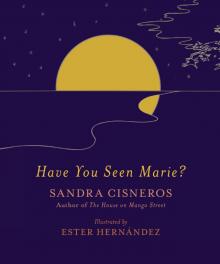 Have You Seen Marie?
Have You Seen Marie?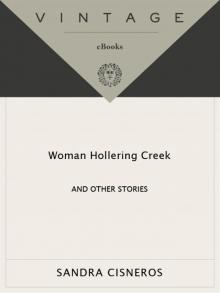 Woman Hollering Creek: And Other Stories
Woman Hollering Creek: And Other Stories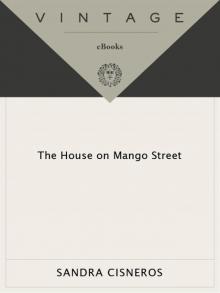 The House on Mango Street
The House on Mango Street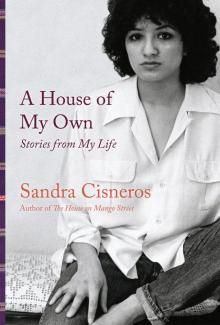 A House of My Own: Stories From My Life
A House of My Own: Stories From My Life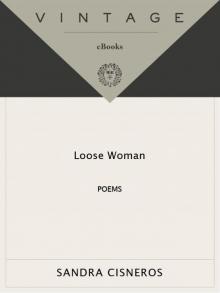 Loose Woman
Loose Woman Caramelo
Caramelo Martita, I Remember You/Martita, te recuerdo
Martita, I Remember You/Martita, te recuerdo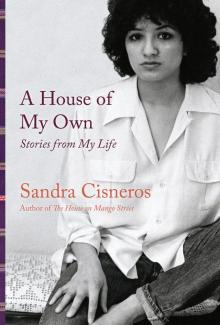 A House of My Own
A House of My Own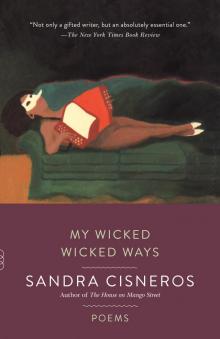 My Wicked Wicked Ways
My Wicked Wicked Ways